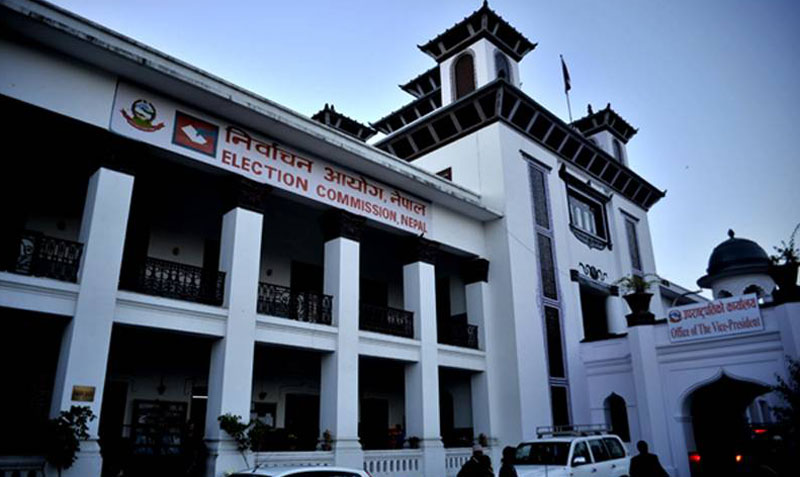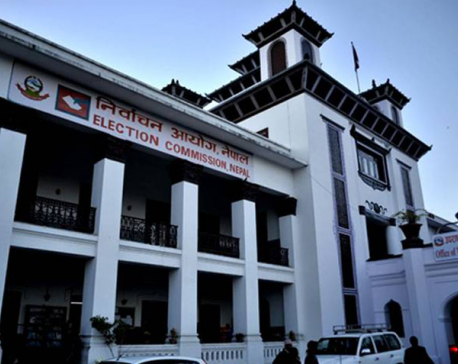
OR
Election symbols to be allocated to NA candidates on Monday
Published On: January 27, 2018 07:09 PM NPT By: Republica | @RepublicaNepal

KATHMANDU, Jan 27: The Election Commission is to allocate election symbols to candidates contesting the election to the member of National Assembly on January 29.
The National Assembly election is taking place on February 7.
The final list of candidates would be published on January 29 at 4 pm and the same day the candidates would be allotted the election symbols, Election Commission spokesperson Nawaraj Dhakal said.
The candidates have until 2 pm on Sunday to withdraw their names if they wanted to do so.
Biratnagar in Province 1, Janakpurdham in Province 2, Patan in Province 3, Pokhara in Province 4, Dang in Province 5, Surkhet in Province 6 and Doti in Province 7 have been designated as the voting centers for the election.
Voters include 1,506 chairpersons and deputy chairpersons of the rural municipalities and the mayors and deputy mayors of municipalities, and 550 Province Assembly members. There are 367 voters in Province 1, three hundred seventy-nine in Province 2, three hundred forty-eight in Province 3, two hundred and thirty in Province 4, three hundred and five in Province 5, one hundred and ninety-eight in Province 6 and two hundred and twenty-nine in Province 7.
Twenty-six women, 28 of other groups, 14 Dalits and 15 people representing the people with disabilities and minorities have filed their candidacies under various groups from nine political parties.
Each province will elect eight members to the National Assembly. Among them, three will be women, one Dalit and one from among the people with disabilities or from the minorities.
The President will nominate three more members to the National Assembly at the recommendation of the government. The National Assembly is a 59-member upper chamber of the federal parliament.
Meanwhile, the Election Commission has enforced the election code of conduct to hold the election in a free, fair, transparent and fear-free environment.
According to the EC, the code of conduct will be binding to the government, the government ministers, the provincial governments and the local level, employees of the local level and province level, the offices and employees of the public corporations and semi-government corporations as well as the security personnel.
Similarly, the political parties and their sister organisations, candidates and related persons, persons holding public posts, election observers, communications media run by the government and the private sector, private and non-governmental organisations, and teachers and employees of universities or community schools run on government grant would also come under the purview of the code. RSS
You May Like This

EC allocates election symbols to political parties for NA election
KATHMANDU, Jan 19: The Election Commission has allocated election symbols to the 21 political parties that have registered for the... Read More...

Parties, independent candidates provided election symbols
KATHMANDU, May 6: Returning officers in 283 local units of three provinces – 3,4 and 6 - provided election symbols to... Read More...





Just In
- MoHP cautions docs working in govt hospitals not to work in private ones
- Over 400,000 tourists visited Mustang by road last year
- 19 hydropower projects to be showcased at investment summit
- Global oil and gold prices surge as Israel retaliates against Iran
- Sajha Yatayat cancels CEO appointment process for lack of candidates
- Govt padlocks Nepal Scouts’ property illegally occupied by NC lawmaker Deepak Khadka
- FWEAN meets with President Paudel to solicit support for women entrepreneurship
- Koshi provincial assembly passes resolution motion calling for special session by majority votes






_20220508065243.jpg)






Leave A Comment